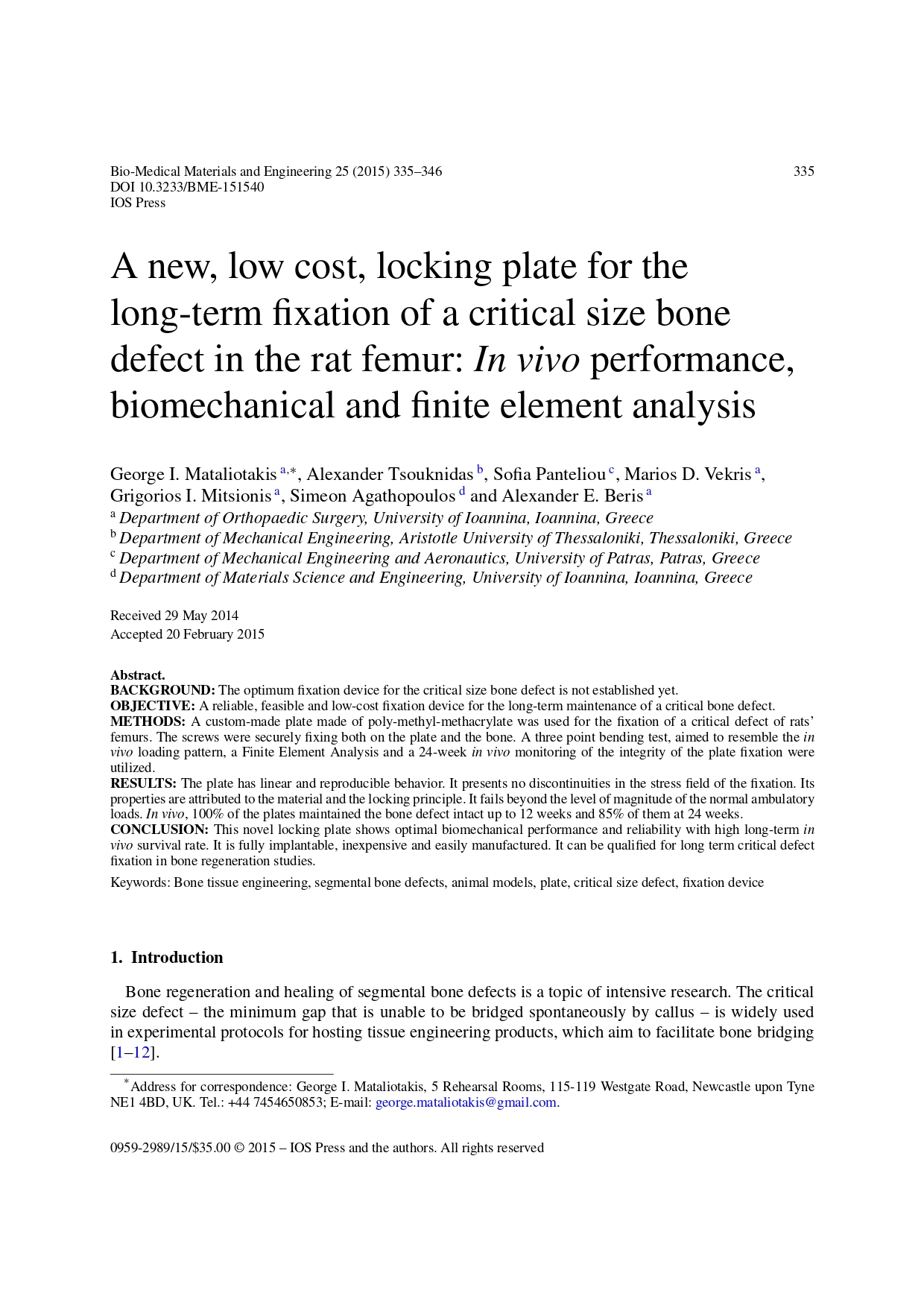Τitle
A new, low cost, locking plate for the long-term fixation of a critical size bone defect in the ratfemur: In vivo performance, biomechanical and finite element analysis
A new, low cost, locking plate for the long-term fixation of a critical size bone defect in the ratfemur: In vivo performance, biomechanical and finite element analysis
Bio-Medical Materials and Engineering, 25 (4), pp. 335-346.
BACKGROUND: The optimum fixation device for the critical size bone defect is not established yet.
OBJECTIVE: A reliable, feasible and low-cost fixation device for the long-term maintenance of a critical bone defect.
METHODS: A custom-made plate made of poly-methyl-methacrylate was used for the fixation of a critical defect of rats’ femurs. The screws were securely fixing both on the plate and the bone. A three point bending test, aimed to resemble the in vivo loading pattern, a Finite Element Analysis and a 24-week in vivo monitoring of the integrity of the plate fixation were utilized.
RESULTS: The plate has linear and reproducible behavior. It presents no discontinuities in the stress field of the fixation. Its properties are attributed to the material and the locking principle. It fails beyond the level of magnitude of the normal ambulatory loads. In vivo, 100% of the plates maintained the bone defect intact up to 12 weeks and 85% of them at 24 weeks.
CONCLUSION: This novel locking plate shows optimal biomechanical performance and reliability with high long-term in
vivo survival rate. It is fully implantable, inexpensive and easily manufactured. It can be qualified for long term critical defect fixation in bone regeneration studies.
